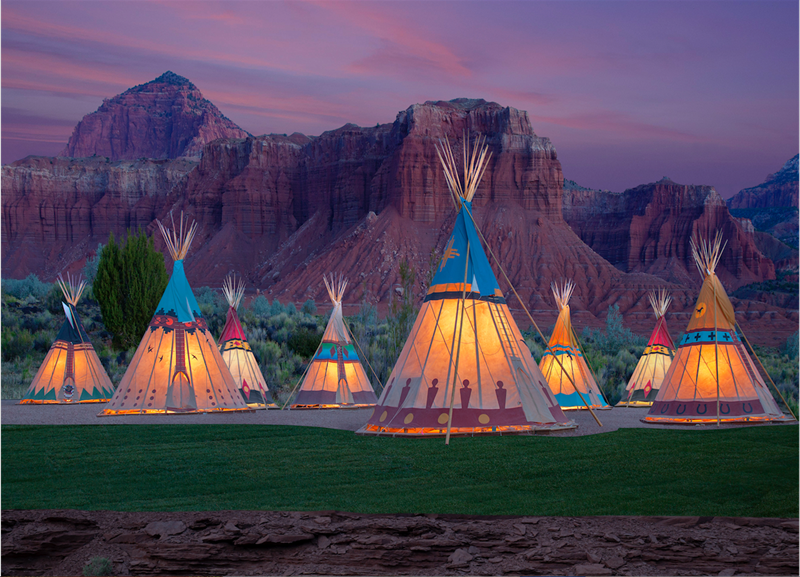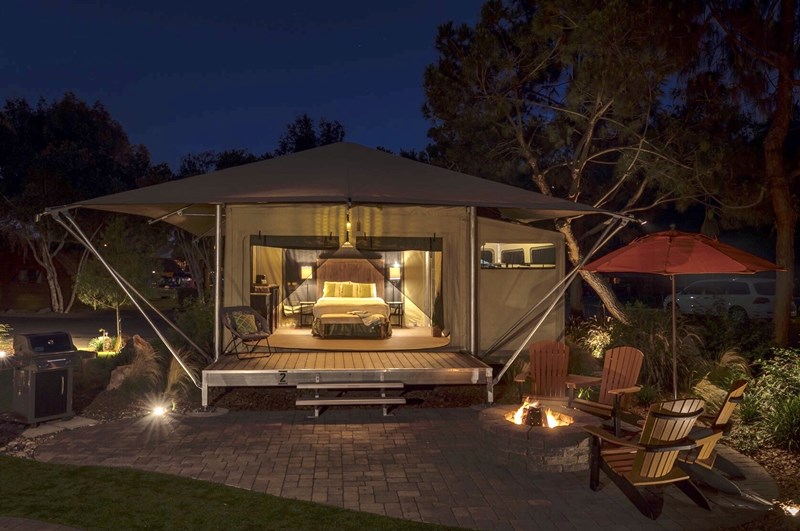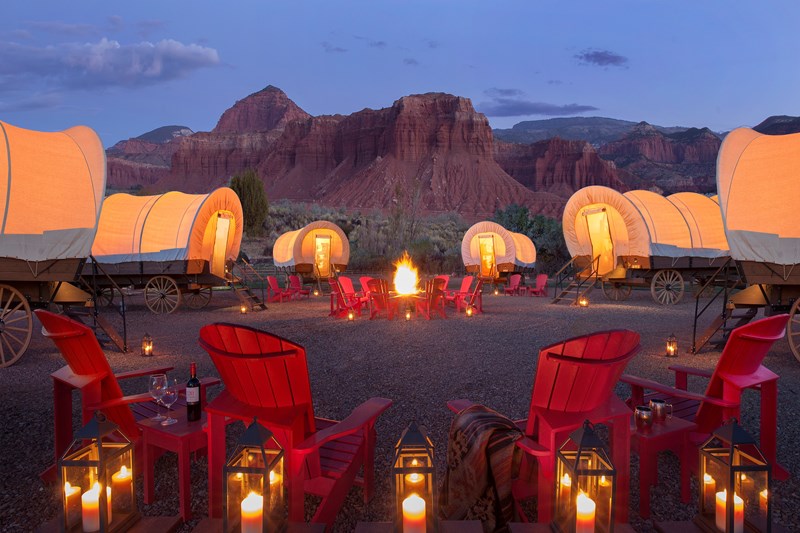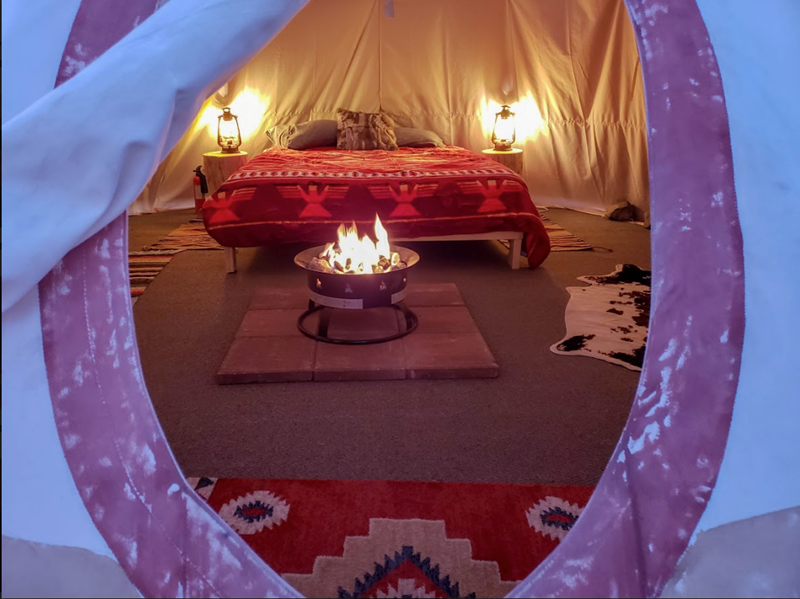By: Elisabeth Thomas, Writer and PR Consultant for Nomadics Tipi Makers
Glamping is taking the travel, outdoor, and hospitality industries by storm. If you haven't tuned into 'glamping' trends, likely, you've at least heard the term and know something about the industry. If this is your first time looking into 'glamping' as a business, here's a brief history:
Glamping as a global trend has grown exponentially since the term gained momentum in the UK and Europe in 2007. Glamping.com reports that web-searches for the term 'glamping' increased around this time, and have only risen in recent years. In 2016 the word "Glamping" was formally added to the Oxford English Dictionary, and today, glamping businesses are established in the UK and Europe. In the US, these companies are also becoming more prevalent, and the industry shows no signs of slowing down. A recent Arizton report notes that the glamping industry is projected to reach revenues of approximately $1 billion over the next five years--exponential growth for an outdoor-travel niche.

One of the first industry conferences, The Glamping Show in the UK, attracts more than 2,400 visitors each year and showcases more than 100 exhibitors. In 2018, the American Glamping Association (AGA) was formed, along with the Glamping Summit USA, which attracted approximately 400 participants and 40 exhibitors in its second year.
The Cain Consulting Group for Kampgrounds of America shared a study in 2019 showing over 50% of millennials surveyed have regularly gone 'glamping' or are interested in glamping over the next twelve months. These statistics and trends add up to one truth: glamping is a booming industry, and it's here to stay.
How is glamping different from traditional camping?
Many outdoor enthusiasts now travel to and stay in glamping structures and at glamping resorts. So let's take a moment to examine what qualifies as glamping in 2019.
The Arizton report on Glamping in the USA defines it as "a form of camping that includes more luxurious facilities and accommodations than what generally are associated with traditional camping. It can include amenities such as beds, in-suite bathrooms, linens, gourmet meals, etc."
Today's travelers are looking for new choices for their vacations. In recent years, the "Staycation" has become more desirable, along with a passion for exploring hidden or 'off-the-grid' places.
Structures for the modern glamper:
From cabins and safari tents to yurts, wagons, tipis and trailers, the structures that create a glamping experience vary as much as the destinations.
Cabins - According to a study presented at the Glamping Summit, about 60% of participants said that staying in a cabin in nature can be considered glamping.
Safari Tents - Another large category in the glamping structures worldwide are safari type tents. Safari tents are spacious and feel somewhat like a cabin with canvas walls. They include windows, and many have the option of an en-suite bathroom. These tents exude an air of African safari flair and are often placed on a wooden deck with garden furniture.

Josh Bell, from Eco Structures USA, said recently, "We are finding that the interest in the glamping segment has exploded in the last 12 months."
American Traditional Structures - The most authentic and traditional glamping structures available in the US include covered wagons, like those made by Conestoga Wagons, and Native American Tipis, like those made by Nomadics Tipi Makers. Giving consumers an experience that is unique and authentic to North America, they also require less footprint than the larger, more permanent structures.
Jeb Barton, Founder of Nomadics, reflects, "It is a stunning moment to be running a river to come floating around a corner and see a tipi set up on a beautiful expansive beach. Experiencing a tipi in an outdoor setting is a never forgotten memory. It can take us more deeply into the experience of Nature and likewise, to explore more deeply into the nature of ourselves.”
Other structures - For more insight and detail on numerous other options to glampers, such as yurts, tree houses, bell tents, bubble tents, or refurbished airstreams, visit the Glamping.com 'Accommodations' section for Glampinghub.com, Hipcamp.com or Glamping.com.

Amenities are a distinguisher.
When asked about the importance of amenities, over 90% of travelers stated that linen should be provided, and over 70% want to have a proper bathroom included or nearby. These results make it clear that companies who build glamping structures need to consider these factors. The industry has taken note and is responding with several ways:
Bathrooms - Many glamping structures and resorts now offer high-tech compostable or incinerating toilets, greywater filtration systems, fully self-contained water basins. Others provide movable bathhouses in a rustic western style, such as the bathhouses from Conestoga Wagon Company. Nomadics Tipi Makers offers floor plans and construction details to integrate a bathroom with shower into their glamping-model tipis.
Connectivity - Several glamping resorts are making a point of only providing Wi-Fi in the common area, not in individual accommodation structures. Utilizing common areas for internet access is a good compromise that offers 'emergency' connectivity and helps properties appeal to more guests.
Aside from the basic amenities listed above, many others are available to today's glamper. Some of these include patios and outdoor hot-tubs, common areas for games and relaxing, and more. For additional insights on current glamping trends, read this article from Open Air Business.
Services make the difference.
Glampers are looking for little touches that make their experience special. An “Instagram worthy” arrival scene, with flowers and a bottle of wine on the table, cozy blankets for cooler nights or a special buggy for transporting luggage are some of the amenities that glamping resorts are providing. The Resort at Paws Up even offers a personal chef during guests’ stay.

Sustainability and green practices.
The Glamping movement encourages environmental awareness on an international scale. It is a unique opportunity for glamping-site owners to point out their choice of sustainable suppliers, as well as educate guests in an effort to reduce, reuse, and repurpose waste. The businesses at the forefront of the sustainability movement are taking their practices a step further to make an ecological impact and incorporate ethical accountability into the culture of their company. Being certified not just by the American Glamping Association or TripAdvisor, but also by Green America or 1% for the Planet can be a distinguishing factor for the conscious glamper.
About Nomadics Tipi Makers:
Since 1970 Nomadics Tipi Makers has been creating shelters in the tradition of the Native American Cultures of the Great Plains. With a mission of offering lodges made with ethical and sustainable practices to travelers looking to gain intimacy with nature in a harmonious way, Nomadics Tipi Makers has become a leader in tipi making. The tipi’s unique shape, heritage, and cultural relevance make it perfect for conscious group or community camping. Nomadics Tipi Makers’ stunning artwork and unique design elements, including a tipi campground model with modern comfort features, make it appealing for glamping adventures.
Find out more about Nomadics Tipi Makers at tipi.com.
_(1).jpg)